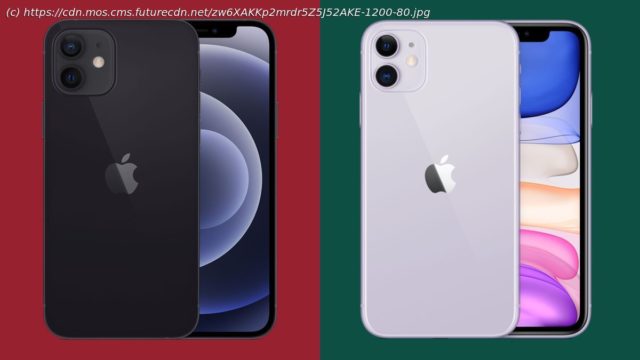One small numerical increase, one giant leap for Apple’s mainstream iPhone line
The iPhone 12 range has been heralded as the start of a new era for Apple’s famed smartphone family. But is it really such a leap forward? Perhaps the best way to answer that question is to pitch the iPhone 12 against the iPhone 11 in a straight face-off. Not only does one directly follow the other, but they’re thought to be one of the best selling Apple phones from their respective years. Add in the fact that Apple still sells the iPhone 11 as new, and this comparison becomes all the more pertinent. Below we’ll talk you through everything we’ve learned about these two phones during our reviews process so you can make a decision which is for you. The iPhone 12 became available for purchase on October 23,2020. Prices start from $799 / £799 / AU$1,349 for the 64GB model, moving up to $849 / £849 / AU$1,429 for 128GB, and $949 / £949 / AU$1,599 for the 256GB model. Its predecessor, the iPhone 11, landed on September 20,2019. At launch, prices started at $699 / £729 / AU$1,199 for 64GB, increasing to $749 / £779 / AU$1,279 for 12GB and $849 / £879 / AU$1,449 for 256GB. However, we’re a year on now. As mentioned above, the iPhone 11 is still available to buy brand new in all three storage capacities, but prices are much lower than before. You can currently pick up the 64GB model for $599 / £599 / AU$999, the 128GB model for $649 / £649 / AU$1,079, and the 256GB model for $749 / £749 / AU$1,249. This gives the iPhone 12 quite a task. Can it justify the additional expenditure of $150 / £150 / AU$270 over its still-relevant predecessor? We weren’t hugely enamored with the iPhone 11 design when it arrived on the scene. There was a sense that we’d seen it all before – which we had (or most of it, at any rate) with the previous year’s iPhone XR. The iPhone 11 essentially followed the same blueprint, albeit with a few differences. It’s available in fetching new colors of mint green, lilac and lighter yellow shades, which join the Product (RED), black, and white variants. The back of the phone is slightly cleaner than before, but with a rather obtrusive new camera array that also appears on the iPhone 12. The iPhone 11’s is a premium-feeling phone, featuring the same balance of glass surfaces and aluminum body as its newer sibling. But it’s a chunky bit of kit at 150.9 x 75.7 x 8.3mm and 194g – certainly compared to the iPhone 12, which measures just 146.7 x 71.5 x 7.4mm and weighs 164g. Lest you get blinded by figures, the iPhone 12 is smaller than the iPhone 11 in every way. It’s 4mm shorter,4mm narrower, almost a millimetre thinner, and a whopping 30g lighter. This comes down to Apple’s crisp new design for the iPhone 12. It’s rather reminiscent of the iPhone 4 and 5, with its flat-edged industrial approach. However, the tolerances are even tighter, and the screen extends closer to the edges. It loses the attractive dark green shade from the iPhone 11 lineup, as well as the less appealing yellow and purple shades, but in their place is an appealingly deep shade of blue and a slightly less attractive light green tone, It’s also available in the usual Black, White, and Product (RED) variants. Going back to the subject of build quality, the iPhone 12 gains a new nano-crystalline Ceramic Shield screen, which is four times tougher than before. While both phones are IP68 certified, meanwhile, the iPhone 12 can be immersed in 6 metres of water for 30 minutes, while the iPhone 11 can only withstand 2 metres.
Home
United States
USA — software iPhone 12 vs iPhone 11: which Apple smartphone is the right choice...






